When I last wrote, Al and I had traced Chartiers Creek from its origins in rural Washington County all the way to Bridgeville. We are finally at end of our journey, in McKees Rocks, where the creek empties into the Ohio River – and where my own family has deep roots.

Chartiers Creek flowing into the Ohio River at McKees Rocks
Early History of McKees Rocks
The town of McKees Rocks has a long and colorful history. It was first settled about 5000 years ago. The very first settlers grew corn and beans in the flatlands along the Ohio River now known as The Bottoms. They hunted in the forests of the Ohio Valley and fished in the rivers and streams. We know that they must have fought with other Indians, because they left behind remnants of their arrow and throwing spears. But their ultimate fate is unknown.
The next settlers of The Rocks were the Adena (800 BC – 100 AD) and Hopewell (100 – 500 AD) peoples, the builders of the once-famous Mckees Rocks mound. Mound Building peoples settled all across eastern North America, and the McKees Rocks mound was the oldest in Pennsylvania and among the oldest in the country. The mounds were apparently used as both burial places and sites for ceremonial and spiritual rites. The McKees Rocks mound was surveyed and partially excavated in 1896, and slowly destroyed in the 20th century, by a combination of quarrying and collapse into the Ohio River. Only the smallest remnant of the Mound can be seen today.

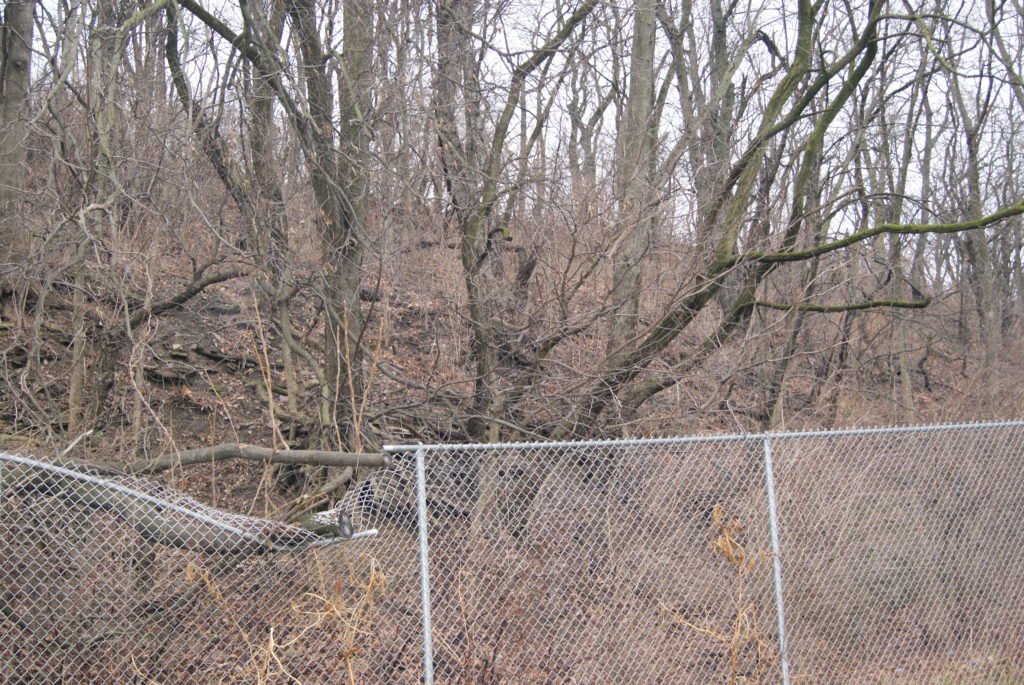
Mound site today, near a little park at the corner of Shingiss and Sproul Sts.
Peter Chartiers got a creek and a township named after him, but it’s Alexander McKee whose name lives on in the town at the confluence of Charters Creek and the Ohio River.
The McKees
In the era after the Mound People, many different Woodland Indians moved in and out of the Ohio River valley. When the Europeans began trading in the area in the 18th century, the Delaware and Seneca Indians predominated. The French were the first Europeans to consistently trade with the Indians, most prominently our old friend Peter Chartiers (see my earlier blog post about the West End of Pittsburgh).
McKee was born on August 14, 1740, in the Pathe Valley, near the Susquehanna River in south-central Pennsylvania. His father, Thomas McKee, had been a trader along the Susquehanna and later at the headwaters of the Ohio. Legend has it that his mother spent some of her childhood years in Shawnee captivity, and that is was she who taught him Indian tongues.
On August 17, 1756, young Alexander enlisted in the 3rd Battalion of the Pennsylvania Colony Regiment, and served in the French & Indian War. Later, he and his father both worked closely with George Croghan, who was put in charge of Indian affairs in the Ohio valley in 1758. Alexander spoke several Indian languages fluently, and got wind of Pontiac’s uprising in 1863 when he noticed that the Indians had started trading their furs for lead and gunpowder. He warned Croghan of the coming uprising, and was in charge of all communications with the Indians during the siege of Pittsburgh in June and July of 1763.
After the battle of Bushy Run resulted in Pontiac’s defeat, Colonel Bouquet rewarded McKee with a 1400-acre estate, including all of present-day McKees Rocks and a strip of present-day Pittsburgh on the west side of Chartiers Creek. McKee was also named commissary at Fort Pitt, a post that he held until the British abandoned the fort in 1772. After Pontiac’s war, McKee also resumed his trade with the Indians and became the Indian agent for the area. His estate prospered and he entertained George Washington for dinner in his grand house called Fairview on October 20, 1770.
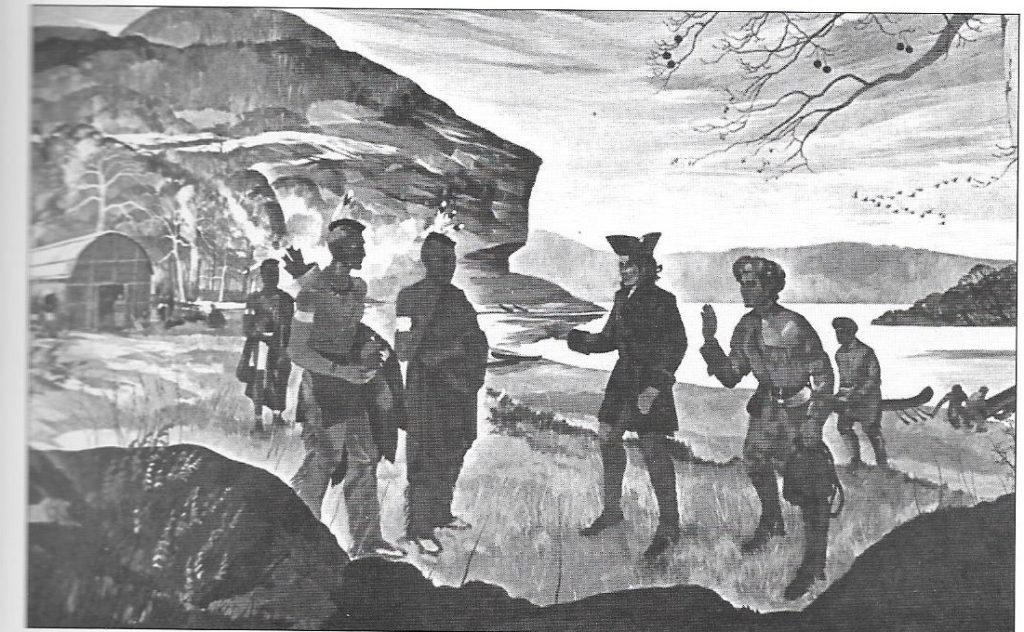
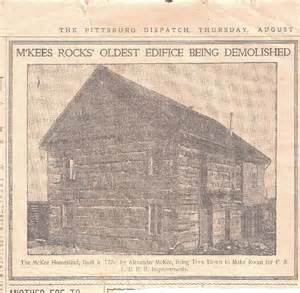
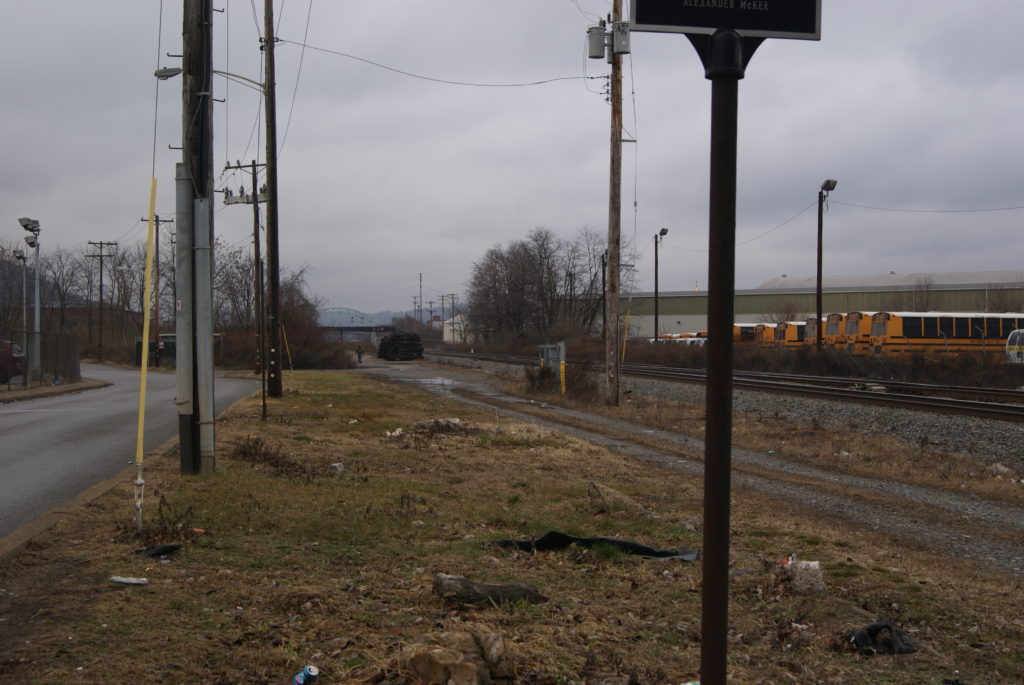
Here’s what the site of the McKee house looks like today, across the street from Crivelli Chevrolet . I have a feeling it was a lot prettier back when George Washington visited.
But with the coming of the American Revolution, McKee’s luck changed. He sided with the Tories and was run out of the town that bears his name in March of 1778. His estate was taken over by his brother, James, who had backed the right side. James lived on the estate until his death in 1853.
Alexander made his way to Detroit, where he worked as a liaison between the Delaware Indians and the British. Later, he was appointed Superintendent for Indian Affairs in Canada and moved to Ontario. He died in Maldeen, Ontario, on January 14, 1799.
Recent History of McKees Rocks
In the decades that followed, the McKees’ namesake town prospered into a railroad and manufacturing center, home to the Pittsburgh & Lake Erie Railroad, the Pressed Steel Car Company, the Shoen Works of Carnegie-Illinois Steel, and many other thriving industries. 19th-century immigrants to the Rocks were mainly from Germany, but in the first half of the 20th century, immigrants from eastern and southern Europe poured into the rail yards and factories of McKees Rocks. They settled in row houses in The Bottoms along the Ohio.
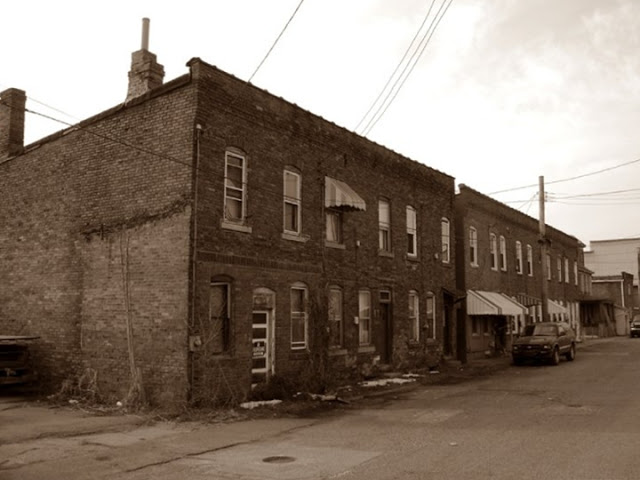
The Rocks in the early 20th century was a bustling little town, boasting at least two movie theaters, several grocery stores and supermarkets, a skating arena, and the dry cleaners, bakeries, and other little shops that allowed people of that era to thrive running their own small businesses. My family has home movies of a Little League parade in the early 1960s. The population of the Rocks was so large and active that they fielded several teams who never had to leave the Rocks for opponents to play. I remember going to my cousins’ games where dust rose from the parched fields and the smells of diesel fuel and burning coke were the perfume of prosperity. My own family’s history is very bound up in McKees Rocks’ glory days, and I will be blogging about that next time.
Like so many industrial towns, McKees Rocks’ fortunes declined in the late 20th century. The factories closed, the P&LE Railroad shrunk and was finally sold, and the little businesses along Chartiers Avenue and Broadway slowly began to close. The dry cleaner where my father worked as a teenager burned down about 20 years ago, and the shell is still a charred gap on Chartiers Avenue.
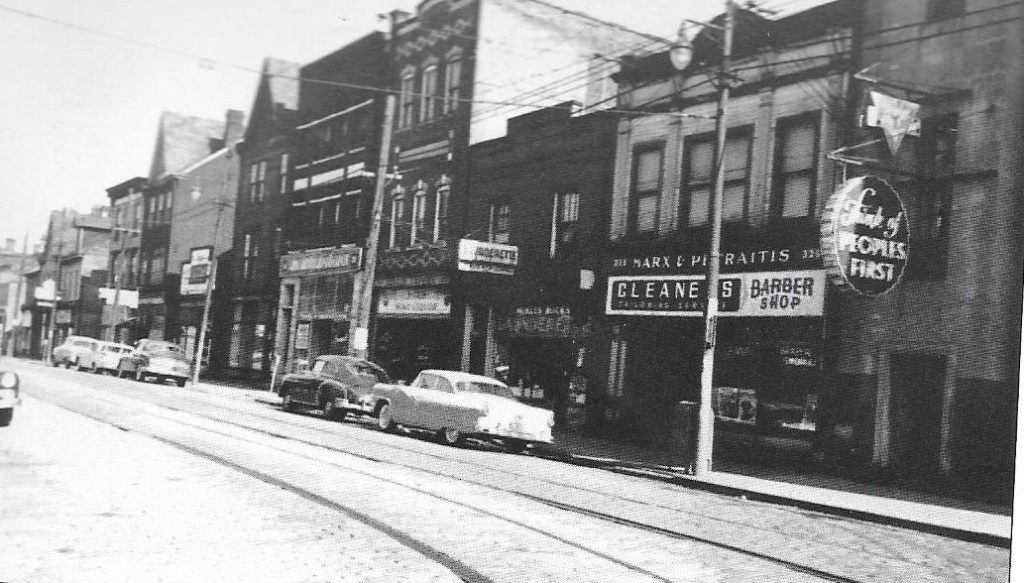
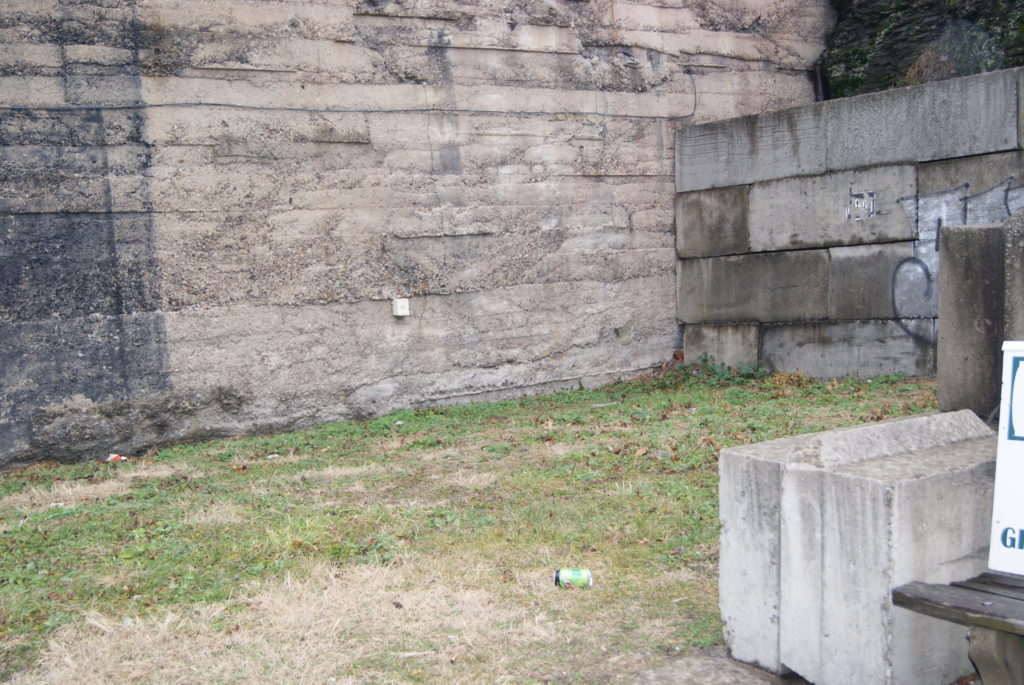
Sadly, the site of Petraitis Cleaners has been a vacant lot on Chartiers Avenue for many years.
But the community is fighting back hard. For 50 years, the Focus On Renewal organization has been providing social services such as a food pantry, early-childhood education, mental health support services, arts programs and small business incubation. Some steel fabricating factories remain, CSX Railroad has increased their presence, the Roxian theater has re-opened, and the community is known for Pierogies Plus and Mancini’s Bakery. I liked to think that old Peter Chartiers and James and Alexander McKee would be proud of their community’s tough, resilient spirit.

The Roxian is looking good these days! 
Some remnants of the old industrial past
Sources:
Images of America: McKees Rocks and Stowe Township – Bernadette Sulzer Agreen with the McKees Rocks Historical Society
https://historicpittsburgh.org/islandora/object/pitt%3A31735066234331/viewer#page/1/mode/2up

